Cherry laurel is part of the Rosaceae family, the genus Plum and the subgenus Cherry. This name was chosen for the plant because its leaves are similar in appearance to the foliage of laurel. This tree appeared in cultivation in ancient times, and it was grown as an ornamental plant.

Despite the fact that cherry laurel grows in areas with both warm and temperate climates, it is considered evergreen. The plant is represented by low (maximum 10 meters) trees with a narrow pyramidal crown or shrubs. As a rule, the height of cherry laurel depends on the climatic characteristics of the region in which it grows. For example, if the region has frosty winters, then the maximum height of the tree will be about 200 cm.
The glossy, leathery foliage is about 6 centimeters wide and up to 20 centimeters long. They are similar to bay leaves in both color and shape. In the winter months, the branches of the cherry laurel are not exposed; they are covered with foliage, just like in the summer. The lifespan of one leaf blade is approximately 2 years. In this case, the process of replacing old leaves with young ones occurs gradually.
This plant is characterized by fairly high frost resistance, so it is not afraid of air temperatures dropping to minus 20 degrees. If you reliably cover the plant for the winter, it can withstand temperatures dropping to minus 30 degrees.
Reproduction methods
Growing from seeds

Most often, cherry laurel seedlings are grown from the seeds found in the berries. This method is used by the tree to reproduce in the wild.
When sowing seeds in open soil, seedlings may not arrive due to unfavorable weather conditions. Therefore, in order to avoid the possible death of seedlings, in the first year of growth they are cultivated indoors. Before sowing, the seeds are subject to mandatory stratification; for this they are placed in a cold place (about 5 degrees) for 2 months. At the end of this time, the seeds are soaked in hot water for about 24 hours, which helps stimulate the appearance of sprouts. The containers are filled with an earth mixture consisting of garden soil and peat. Then the prepared seeds are sown in them. If desired, the seeds can be stratified after sowing. To do this, place the container in a suitable cool place. And after the allotted time has passed, it is simply transferred to a warm place.
When the seedlings are 1 year old, they can be planted in open ground in a permanent place. Planting is carried out in the spring months after warm weather sets in.
Cuttings
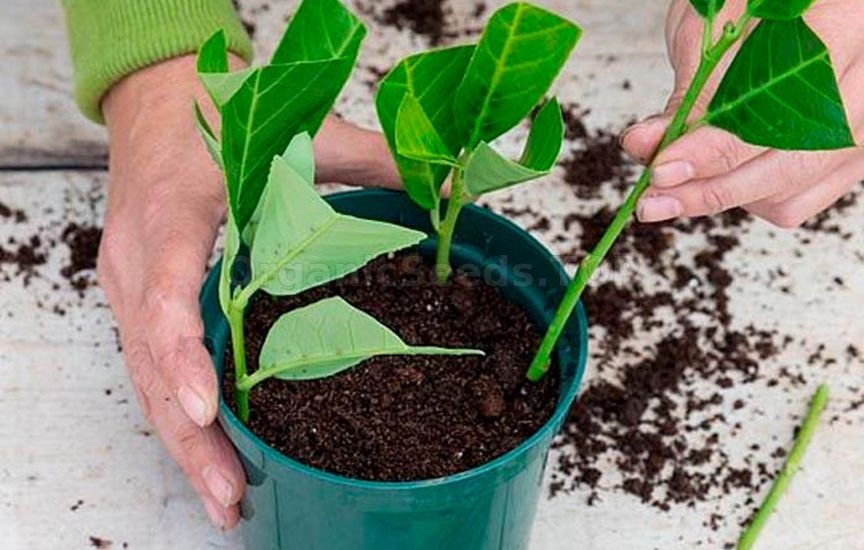
When growing cherry laurel from seeds, the seedlings do not always retain the varietal characteristics of the parent plant. In this regard, if you want to get an exact “copy” of a particular variety, then it is recommended to use the cuttings method for propagation. Cuttings are harvested in the first weeks of summer, choosing lignified shoots for this. The optimal cutting length is from 10 to 12 centimeters.
Tear off all the lower leaf plates from the segment so that it does not waste unnecessary force. Next, it is planted for rooting; for this, a fertile soil mixture consisting of sand, humus, peat and garden soil is used. In warm conditions, cuttings take root most quickly. Therefore, in the room where they are located, the air temperature should be around 24 degrees. Also, the sections should be covered on top with a transparent cap (cellophane bag, glass jar, cut-off bottle, etc.) to create greenhouse conditions. Before planting, the cuttings can be kept in a glass of water for some time until roots form.
After rooting, 1 year should pass, and only after that the seedlings can be transferred to a permanent place in open ground. Until this moment, they should be kept in a warm room. During this year, the bush develops a developed root system, and it also manages to become so strong that it is no longer afraid of adverse weather conditions.
Layerings
To propagate such a plant, layering is often used. The process of layering should begin in the spring so that the bush has enough time to form roots.
A young healthy shoot is selected from the bush, located as close to the ground as possible. Make a small cut on the part of the shoot that will be in contact with the soil. Fix the shoot on the surface of the soil and cover it with soil. You should not make an excessively large cut, as the cuttings may lose contact with the parent plant, which will negatively affect its rooting.
During the summer period, the layering should be provided with regular feeding and watering. Roots should appear at the cut site after a few months. At the end of the summer or at the beginning of the autumn, the cuttings are separated from the parent plant and transplanted to a permanent place. Remember that the transplanted cuttings must still have time to take root properly, and therefore it is very important to choose the right time for this procedure. There should be approximately 4-8 weeks until the first frost.
Cherry laurel care
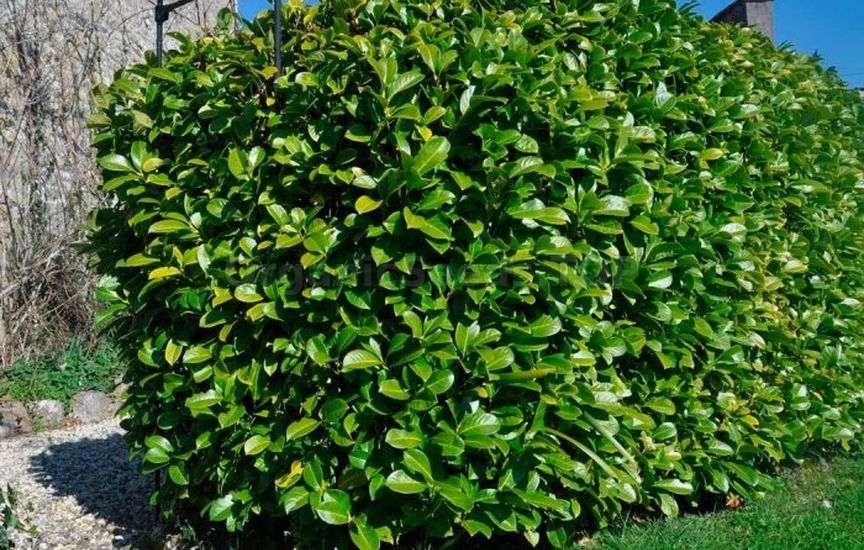 How to water
How to water
They are particularly unpretentiouswinter-hardy varieties of cherry laurel. They require a minimum of attention from the gardener to maintain an attractive appearance and health. This culture stands out for its moisture-loving nature. During the growing season, watering is recommended at least once every 7 days. Moreover, during prolonged rains the plant receives enough natural precipitation.
During long dry and hot periods, water the plant once every 2-3 days, but do not allow moisture to stagnate in the soil. In addition, the tree responds well to sprinkling or spraying, and it is recommended to carry out the procedure in the early morning or in the evening. This helps not only increase humidity, but also remove dust accumulated on the surface of the foliage.
Fertilizer
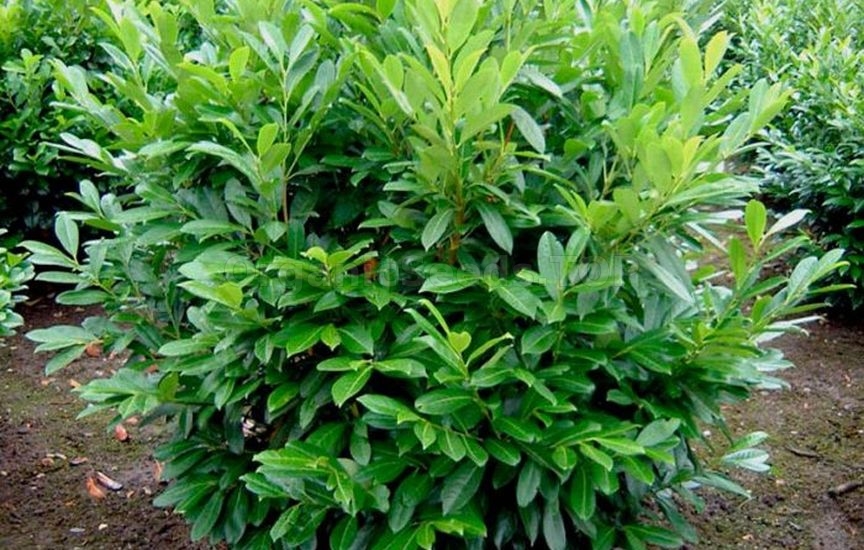
In order for the bush to bloom magnificently and produce a rich harvest, the plant needs regular feeding. Special mineral complexes are suitable for this, as well as organic fertilizers (rotted manure and compost). To avoid overfeeding cherry laurel, the dosage recommended by the manufacturer should be reduced. Fertilizing is carried out from spring until the first autumn weeks, and fertilizers are applied once a month. In autumn, it is not recommended to feed the bush, as this may cause its development to intensify immediately before the arrival of frost. If you still fertilize in the fall, then you should take into account that an excessively large amount of nitrogen in the soil at this time can significantly reduce the plant’s resistance to frost.
Weed removal
While the tree is young, it is recommended to systematically remove weeds from the area. The fact is that due to a poorly developed root system and not very large size, it is difficult for the bushes to compete with weeds for moisture and nutrients. When weeding is completed, you should lightly loosen the surface of the soil in the circle around the trunk, which promotes better oxygen supply to the root system.
Trimming
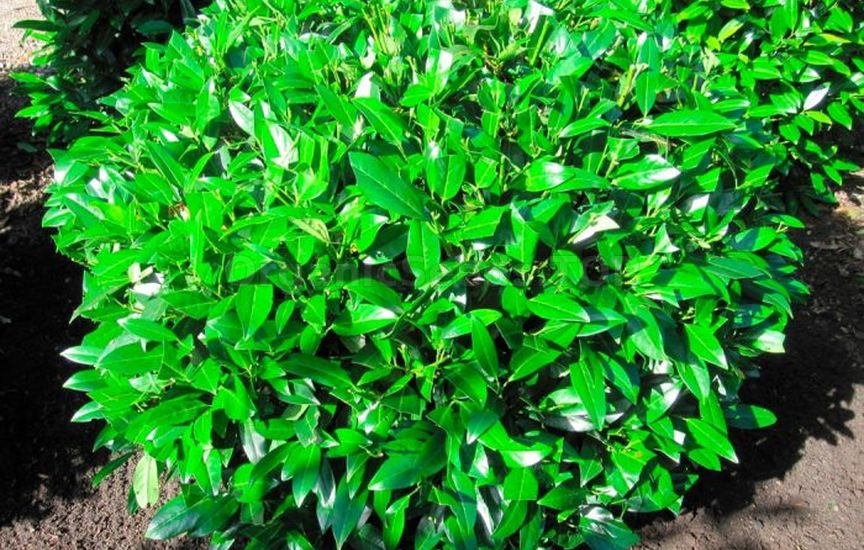
The crown of the tree does not need to be shaped, since its natural shape is quite neat. Moreover, the plant needs sanitary pruning twice a year: in early spring (before sap flow begins), and in mid-October, when the growing season ends. In this case, cut out all injured, dried, frozen and disease-affected branches. Thanks to this, young shoots will grow more actively on the bush.
If cherry laurel is used to form a green hedge, then pruning the crown to give it a certain shape is carried out in the last summer weeks. If desired, such a plant can be cultivated as a standard tree.
Winter care
In late autumn, the surface of the tree trunk circle should be covered with a layer of mulch, which is peat. If there is a frosty winter ahead (below minus 20 degrees), it is recommended to cover the crown of the bush and the lower part of its trunk with non-woven material. Heat-loving varieties of cherry laurel also need the same shelter. In winter, the scorching rays of the sun can burn the foliage; therefore, if necessary, the bushes are provided with shading.
Caring for cherry laurel at home
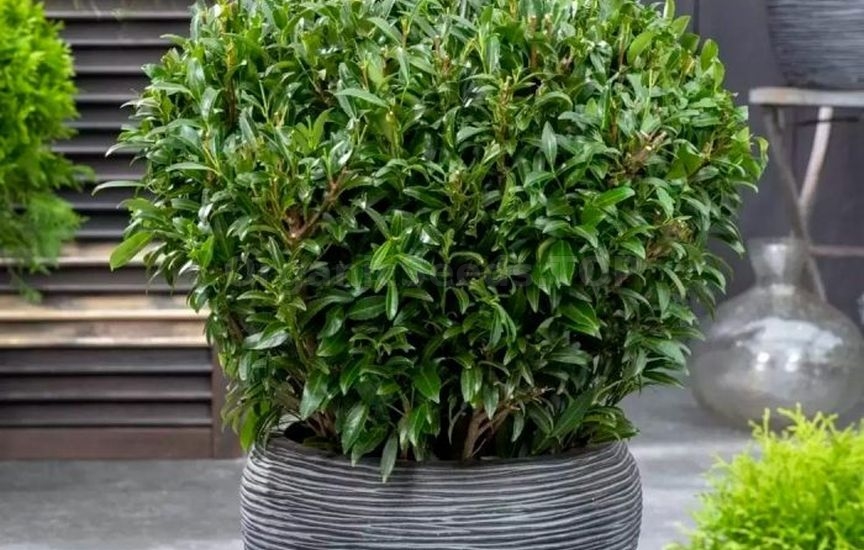
Those varieties of cherry laurel that are distinguished by their compactness and heat-loving nature can be grown at home. In the warm season, such a plant can be kept in the fresh air, and brought into a heated room for wintering. Indoor cherry laurel at home grows best at a temperature of about 24 degrees. She should be provided with a large amount of diffused sunlight, as well as protection from cold drafts.
Planting a seedling in a container is carried out in the same way as planting a plant in open ground. A high-quality drainage layer should be laid at the bottom, and a fertile light substrate should be used to fill the container. For example, it can be prepared by mixing leaf soil, humus and rotted manure. Planted seedlings need abundant watering. Depending on the growing conditions of the tree, it is provided with appropriate care. In the summer, during the period of active growth, cherry laurel is watered once a week. Moreover, in the winter months, watering is carried out approximately 2 times a month. The plant needs only 1 feeding per month, using organic matter and a mineral complex alternately.
Domestic cherry laurel is replanted only as needed. However, it is recommended to replace the top layer of substrate in the container regularly.
Use in landscape design
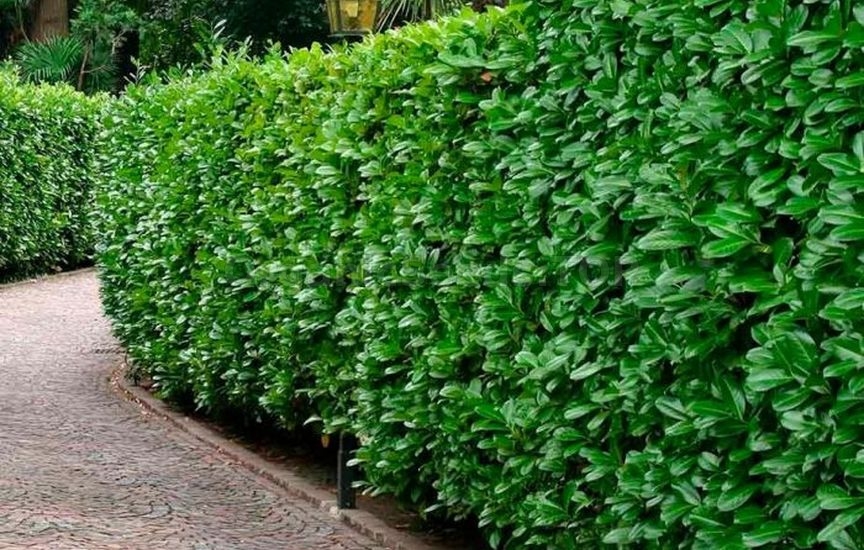
Cherry laurel is in particular demand among gardeners due to its high decorative value. Despite the fact that the tree produces good harvests of tasty berries, they cannot be stored for a long time. In this regard, the harvested crop is processed almost immediately.
Some of the varieties are capable of forming a lush green hedge of high density. Despite the fact that the bush has a compact shape, large leaf plates and many shoots are able to form a dense “fence”. Over time, the branches of plants become so intertwined with each other that even with a strong desire, it is almost impossible to separate them. In order to strengthen the crumbling slope, cherry laurel trees are planted in groups.
This crop looks great both in a single planting and in a group planting together with other shrubs. The bush tolerates formative pruning well, which allows landscape designers to realize a variety of ideas.








